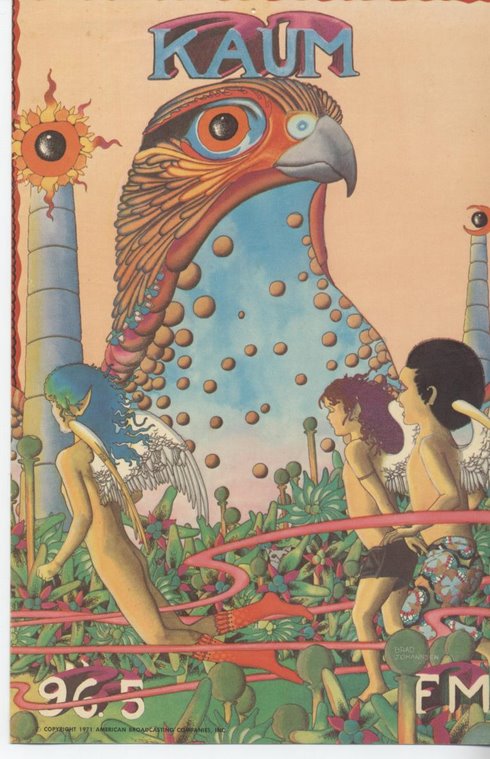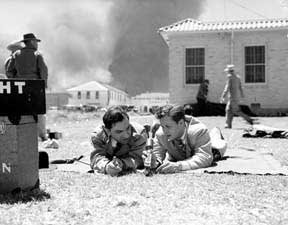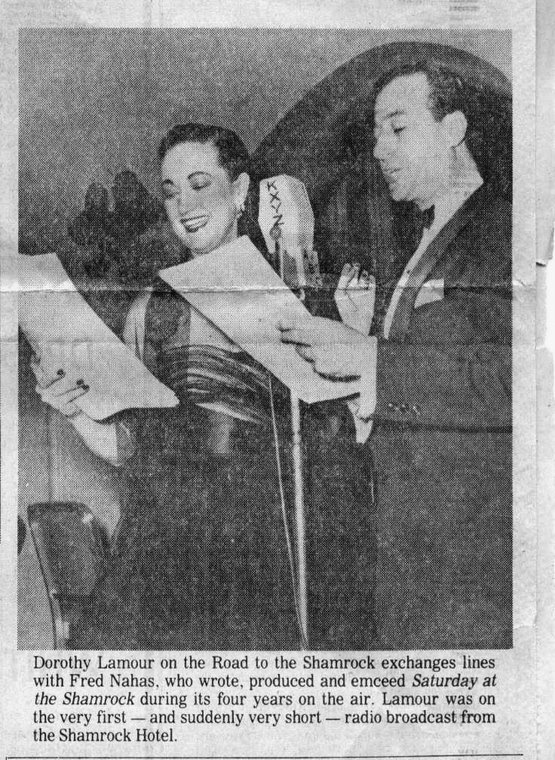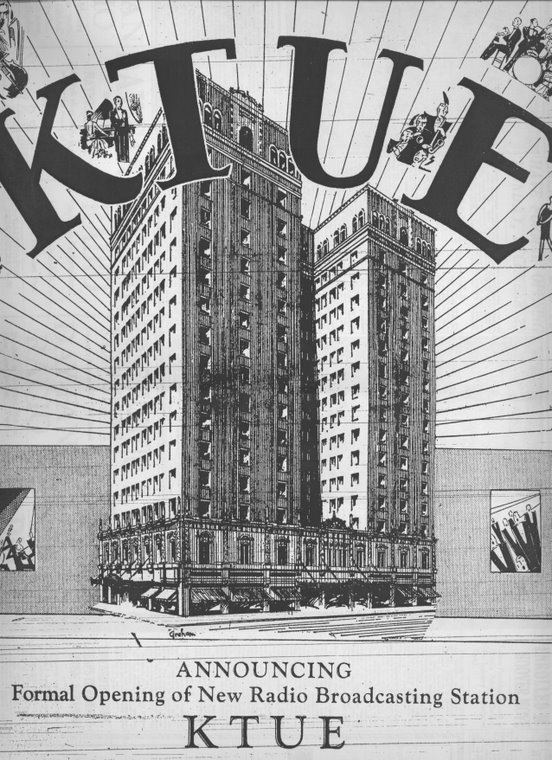Note: This article was edited and revised on October 17, 2009, to add two images and additional details, courtesy of some new finds by Andrew Brown.
Roy Hofheinz was an innovator. I’ve mentioned before that he was one of two individuals I’ve discovered in the course of this research project who most interested me. He made enormous contributions to the history of radio in this city, contributions which also had an impact elsewhere. One story I’ve wanted to tell for some time is the story of the KTHT Cruising Radio Studio.
There are only a couple of paragraphs in Edgar Ray’s bio of Hofheinz and I have wanted to find a picture and more details to do the subject justice. I have found the remodeled facilities for newspaper research at the Houston Public Library very unaccommodating, with no adequate lenses for scanning newspapers on the readers whose screens are uncomfortably high. Fortunately, though, Andrew Brown has shared clippings from his collection which provide a view of the entire unit plus glimpses of the interior of the unit and a very full description.



The first two images are from the station newsletter. I’m not sure which newspaper the clipping and the last photo is from, nor the exact date. From the typeface I’m tempted to guess the article appeared in the Houston Post but it would have been unusual for the Post to give such a glowing report on a competitor’s radio activities. The article mentions the unit was already en route to Philadelphia for the Republican convention which took place in June, 1948. The article in the station newsletter said the unit left Houston at dawn on June, 12.
One of Hofheinz’ hobbies was woodworking; he had hired an expert cabinetmaker, Stuart Young, to design and build the cabinetry for the KTHT studios and turned to him again for the building of the unit which the article says Hofheinz personally helped out on. Also involved was architect Bailey Swenson and two of the station engineers including O.B. Johnson.
The two-piece unit, built at a cost of $25,000, consisted of a gleaming, streamlined 26-1/2 foot trailer and a one ton truck that acted as power supply. The colors were green and silver. It could operate off a conventional 110 volt power source and public water hook-up but could also generate its own electricity to power the transmitting equipment and had a self-contained water supply.
There were sleeping quarters for four and dining accommodations for 10 (or 6 - both numbers in different parts of the article), including a complete galley that doubled as a photographic development studio. A powerful public address system, siren and powerful spotlights were included as well as a complete weather station with barometer, wind indicators and thermometers for use in covering hurricanes. The truck included storage facilities for remote equipment including the wire recorder and lengthy extension cords, complete parts and tube inventory, plus a monogrammed refrigerator and freezer. Hofheinz, always known as a generous host, would treat his guests at the conventions, in New York City and Washington to ‘Houston Fat Stock Show filet mignons and Texas shrimp,' served on monogrammed dinner ware with monogrammed napkins.
The three compartments in the trailer included an air conditioned and sound-proofed studio, a combination control room and galley with two shortwave transmitters, two transcription recorders plus playback turntables, 3 all-wave receivers, a consolette with 6 microphone channels, and a miniature control board, plus standard kitchen equipment including stove, refrigerator, cabinets and sink. The full-size beds in the sleeping quarters folded into sofas for daytime use; there was also an on-board bathroom. Walls of the studio and control room were decorated with photographs of KTHT’s news and public affairs involvement.
According to the article en route to Philadelphia the unit would stop in Baton Rouge, New Orleans, Jackson and Washington, D.C. (Ray says the stop at D.C. took place on the way home). Between the conventions, the unit was taken to New York City and parked outside Rockefeller Center; network officials, celebrities and ordinary New Yorkers were invited on board for a tour. In D.C., the unit was parked outside the FCC and shown off to the Commissioners and staff and engineers.
At the conventions, runners went in and out of Independence Hall keeping in touch with convention activities; a leased line back to Houston was ‘kept pretty hot’ according to engineer Johnson, who also noted the unit attracted great attention. Interviews with important politicians were also transcribed for later broadcast. As at the UN sessions in San Francisco with the wire recorder in 1945, it was unprecedented for a ‘little radio station to be broadcasting as well as the networks.’
Back in Houston after the conventions, the unit was used to cover community events and major news stories (it had perhaps been inspired by the station's efforts to cover the Texas City explosion the previous year and a hurricane in 1946) and sent to schools all over the area to show students how radio programs were prepared and broadcast and recordings made.
Once again I am very grateful to Andrew Brown for sharing these finds.














